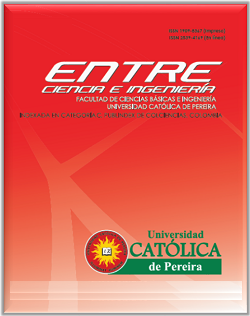Model of Technology and Knowledge Transfer of the Center for Enterprise Services and Management: A Case Study
DOI:
https://doi.org/10.31908/19098367.4020Keywords:
technology and knowledge transfer; triple helix model; multimedia platform; validation.Abstract
The Center for Services and Business Management of the SENA has a software factory where different technology-based projects are executed to solve specific problems. However, these projects lack a technological propagation strategy resulting in minimal diffusion of their developments. In this context, a software platform called GIDPI has been developed by SENA trainees and instructors to improve the technology and knowledge transfer processes. GIDPI allows the formulation of the projects under the logical framework methodology. Transfer model has been adapted from the triple helix model, including the small business of the city of Medellin and according to the programs offered by the SENA Center. This article describes the proposed technology transfer model based on the policies of the institution, and tailor-made for the software factory of the Center. This model will improve the diffusion of the results from the different projects, also contributing to the economic development of the country.
References
Robayo, P. V. “La innovación como proceso y su gestión en la organización: una aplicación para el sector gráfico colombiano - Innovation as a process and its management in the organization: an application for the Colombian graphic sector,” Suma Negocios, vol. 7, pp. 125–140, 2016.
Becerra, F., Serna, H. M., y Naranjo, J. “Redes empresariales locales, investigación y desarrollo e innovación en la empresa. Cluster de herramientas de Caldas, Colombia,” Estud. Gerenciales, vol. 29, no. 127, pp. 247–257, 2013.
Kirchherr, J., and Matthews, N. “Technology transfer in the hydropower industry: An analysis of Chinese dam developers’ undertakings in Europe and Latin America ☆,” Energy Policy, vol. 113, November 2017, pp. 546–558, 2018.
Velásquez, S. M., Valderama, S., y Castro, J. “Planeación estratégica del grupo de investigación BIOMATIC para el fomento de la innovación en el Centro de Diseño y Manufactura del Cuero,” Inf. Tec., vol. 78, no. 1, pp. 37–44, 2014.
Castro, J. J., J. Patiño, A., y Gómez López, C. “Procesos de I+D+i en el Centro de Servicios y Gestión Empresarial del Servicio Nacional de Aprendizaje SENA 2015-2017,” Rev. Espac., vol. 39, no. 20, p. 21, 2018.
Velásquez, S. M., Londoño, J. A., López, C., y Vahos, J. D. “Desarrollo de una plataforma web multimedial para la elaboración de proyectos bajo la metodología de marco lógico,” Lámpsakos, vol. 1, no. 18, p. 12, 2018.
Betancur, N. P. “El Sena a La Vanguardia De La Cuarta Revolución Industrial,” III Simp. Nac. Form. con Calidad y pertinencia, vol. 2, no. 4, p. 1203, 2016.
Sierra, J. “La cuarta hélice y la financiación de la innovación,” J. Econ. Financ. Adm. Sci., vol. 23, no. 45, pp. 128–137, 2018.
Enid, D., y Mendoza, Z. “Modelos de gestión para la transferencia de los conocimientos en instituciones de Educación Superior,” Rev. Ciencias Estratégicas, vol. 25, no. 38, pp. 441–456, 2017.
Park, H. W. “Transition from the Triple Helix to N-Tuple Helices? An interview with Elias G. Carayannis and David F. J. Campbell,” Scientometrics, vol. 99, no. 1, pp. 203–207, 2014.
Chang, H. G. “El modelo de la triple hélice como un medio para la vinculación entre la Universidad y la Empresa,” Rev. Nac. Adm., vol. 1, no. 1, pp. 85–94, 2010.
Londoño, S., Londoño, J. A., Castro, J. J., y Patiño, J. A. “Guía interactiva para el desarrollo de proyectos bajo la Metodología de Marco Lógico,” Espacios, vol. 39, 2018.








 Revista Entre Ciencia e Ingeniería
Revista Entre Ciencia e Ingeniería .png) entrecei@ucp.edu.co
entrecei@ucp.edu.co.png) ISSN (Impreso) 1909-8367 - ISSN (En Línea) 2539-4169
ISSN (Impreso) 1909-8367 - ISSN (En Línea) 2539-4169 Attribution-NonCommercial 4.0 International (CC By-NC 4.0)
Attribution-NonCommercial 4.0 International (CC By-NC 4.0)
.png) Carrera 21 No. 49-95 Av. de las Américas, Pereira, Risaralda, Colombia
Carrera 21 No. 49-95 Av. de las Américas, Pereira, Risaralda, Colombia